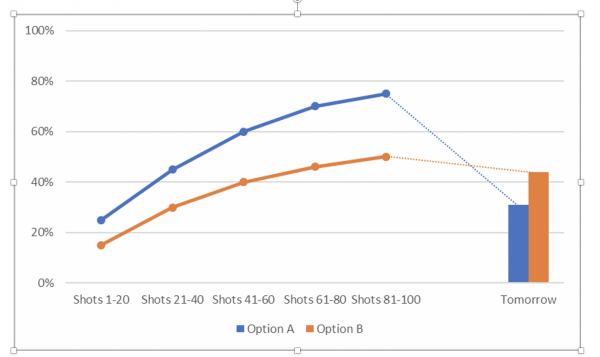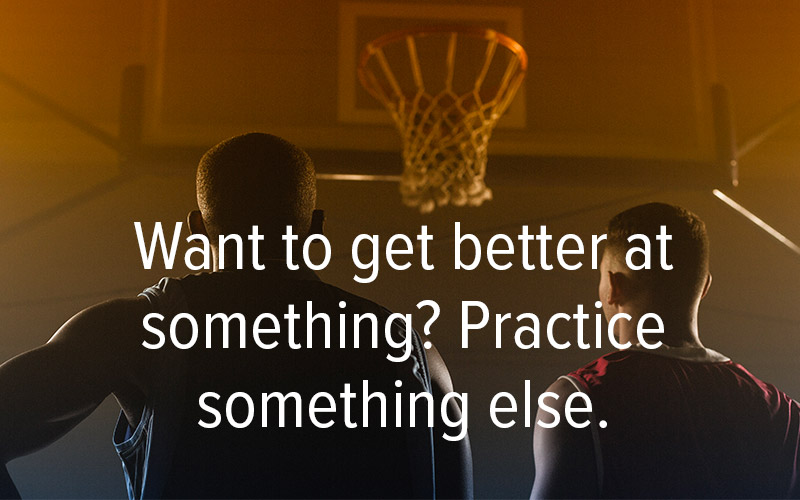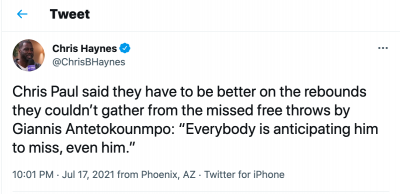
In Game 5 of the NBA playoffs, the Milwaukee Bucks narrowly defeated the Phoenix Suns, 123-119. After the loss, the Suns’ Chris Paul took a shot of his own at Giannis Antetokounmpo, the Bucks’ MVP. Paul claimed that the Suns would have won if they had rebounded better on Giannis’s many, many missed free throws.
In Game 6, Giannis hit 17 of his 19 free-throw attempts, and the Bucks won the national title. “I made my free throws tonight!” he said. This – and the 50 total points he scored – cemented Giannis’s status as a legend at the age of 26, and denied Chris Paul (age 36) perhaps his last opportunity to win his first-ever championship.
Giannis 1, Paul 0.
But Giannis is going to play again next year, and his overall free-throw percentage could, if we’re honest, use some work. How can he get reliably better at free throw shooting? How can anyone? How can you increase your mastery of any skill or concept? How can you improve your brain’s ability to get your memory or body to do what you want?
Let’s stick with free throws for now, but the principle applies much more broadly.
You might think that the prescription would be to practice shooting a bunch of free throws. Let’s compare that to an obviously silly alternative, like…oh, say, never practicing a single free throw. Here’s how you might set up a 100-shot practice under these two conditions:
Option A: 100 shots from 15 feet. This is a regulation free throw. You would shoot 100 of these 15-foot shots.
Option B: One shot from 12 feet, one shot from 14 feet, one from 16, one from 18 – and repeat that 25 times. You would never shoot a regulation free throw.
I’m here to tell you that Option B is better. In other words, practicing no free throws at all has a good chance of being better than practicing exclusively free throws.
How can this be?
A critical element of practice is what your brain is actually processing. A big part of that comes from how errors are corrected. If you miss a little to the left on your fourteenth attempt in Option A, your brain on the next attempt is saying “Do what I just did, but a little to the right.” But that’s not worthwhile learning. Tomorrow, what you just did on attempt 14 will have faded away. There’s almost no value to that correction.
But if you miss a little to the left in Option B, your next attempt can’t use the previous attempt as a crutch. You can’t try to learn from small corrections to things you’ll quickly forget. Instead, you have to learn how to throw the basketball into the hoop. Tomorrow, that’ll help you with free throws.

Here’s why it’s tricky: During practice, Option A will look better. People who try both options will report that Option A feels better. They mistakenly interpret performance during training as an indicator of learning from training. They think that if it feels better, it is better.
It isn’t.
There are two takeaways. First, variation of practice is beneficial for learning – whether it’s free throws or any other skill you want to develop. Mix up your study strategies, locations, exercises, everything. Take away as many brain-shortcuts as you can.
The second takeaway is that learning can be counterintuitive. Professor Robert Bjork at UCLA uses the term “desirable difficulties” to refer to conditions of learning that feel worse but wind up being better. Recognizing that challenges during learning don’t necessarily indicate that someone is struggling – and can instead indicate the exact opposite – is essential for doing what’s best for your brain, yourself, and any learners whose training you oversee.
If you’d like to know more about desirable difficulties, check out our science page. And if you’d like to know more about how Amplifire harnesses several desirable difficulties and a bunch of other brain science, reach out here.




